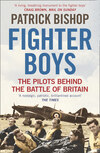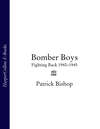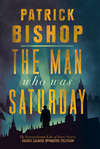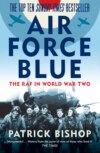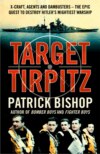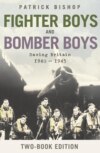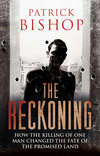Читать книгу: «Fighter Boys», страница 3
Richthofen impressed Boelcke, who was on a visit to the Eastern Front looking for candidates for the new Jasta fighter units, and brought him back to the West. On 17 September 1916 he claimed his first English victim, flying in ‘a large machine painted in dark colours. Apparently he was no beginner, for he knew exactly that his last hour had arrived at the moment I got at the back of him.’ Richthofen was ‘animated by a single thought: “the man in front of me must come down whatever happens”.
At last a favourable moment arrived. My opponent had apparently lost sight of me. Instead of twisting and turning he flew straight along. In a fraction of a second I was at his back with my excellent machine. I gave a short burst with my machine-gun. I had gone so close that I was afraid I might dash into the Englishman. Suddenly I nearly yelled with joy, for the propeller of the enemy machine had stopped turning. Hurrah! I had shot his engine to pieces.’
He had also mortally wounded the two occupants. Richthofen ‘honoured the fallen enemy by placing a stone on his beautiful grave’.21
So Richthofen’s memoir continues, like the reminiscences of some grotesque big-game hunter, constantly noting his score, always on the lookout for opportunities to increase the bag. He was a ‘sportsman’ by nature rather than a ‘butcher’. ‘When I have shot down an Englishman, my hunting passion is satisfied for a quarter of an hour,’ he wrote. ‘Therefore I do not succeed in shooting two Englishmen in succession. If one of them comes down I have the feeling of complete satisfaction. Only much later have I overcome my instinct and have become a butcher.’
As a sportsman he was keen on trophies and the mess of his ‘Flying Circus’ was hung with the debris of his victims’ aircraft. It was a habit he shared with Mannock, another inveterate crash-site scavenger. In keeping with the hunter’s philosophy, he admired his prey and had strong ideas about what quarry was worthy of him. Between the ‘French tricksters’ and ‘those daring fellows, the English’, he preferred the English, though he believed that frequently what the latter took to be bravery ‘can only be described as stupidity’. Richthofen, of course, subscribed to the courtly view of air fighting – ‘the last vestige of knightly individual combat’. But he was sensible about how it should be practised. ‘The great thing in air fighting is that the decisive factor does not lie in trick flying but solely in the personal ability and energy of the aviator. A flying man may be able to loop and do all the tricks imaginable and yet he may not succeed in shooting down a single enemy. In my opinion, the aggressive spirit is everything.’22 It was an observation that was to prove equally valid when the two sides met again in the air twenty-three years later.
Richthofen’s caution meant that in a long fighting career he sustained only one injury before the end. It came on 21 April 1918 when his red Fokker triplane crashed into a beet field at Vaux-sur-Somme. As with Mannock and Ball, the exact circumstances of his death are confused. The credit for it was contested. Captain Roy Brown of 209 Squadron plausibly claimed to have been shooting at Richthofen when he went in. So, too, did an Australian machine-gun battery in the vicinity. The body was removed from the wreckage and taken to Poulainville airfield fifteen kilometres away. Richthofen was laid out in a hangar on a strip of corrugated metal, staring upwards, in unconscious imitation of the effigy of a medieval knight. In the night soldiers and airmen came in and rifled his pockets for souvenirs.
The notion of ‘aces’ placed Richthofen, Mannock, Ball and perhaps a dozen others at the pinnacle of their weird profession. Beneath them were thousands of other aviators who, though mostly anonymous, none the less regarded themselves as special. The faces that look back from the old RFC photographs are bold and open. The men have modern looks and modern smiles. Unlike the army types, whose stilted sepia portraits require an effort of imagination to bring to life, you can visualize the flesh and blood. The images pulse with confidence.
Unorthodox, even louche, though the pilots seemed to the military establishment, the ethos of the RFC was public school. Cecil Lewis, on applying to join, was interviewed by a staff officer, Lord Hugh Cecil.
‘So you were at Oundle?’
‘Yes, sir.’
‘Under the great Sanderson?’
‘Er – yes, sir.’
‘Play any games?’
‘Yes, sir. I got my school colours at fives, and I captained the house on the river.’
‘Fives, you say? You should have a good eye, then.’
After a brief discussion as to whether his six foot three inches would be a major handicap, Lewis was in.23
But there were plenty of pilots who knew nothing of the school close or the college eight. James McCudden, one of the RFC’s greatest pilots, started his career as a boy bugler in the Royal Engineers before transferring to the RFC as a mechanic. Once inside, though, class was always waiting to pounce. John Grider, an American serving with 85 Squadron, recounted how his fellow pilots objected to having McCudden as their commanding officer, ‘because he was once a Tommy and his father was a sergeant-major in the old army. I couldn’t see that that was anything against him but the English have great ideas of caste.’24 The technical ability that flying demanded meant that the RFC could not afford to be exclusive, even though some of the attitudes struck by the pilots seemed in the spirit of a cavalry regiment of another, more raffish time.
The airmen liked alcohol and women, though there were notable exceptions. Ball was teetotal, and had no girlfriend until his meeting with Flora. Mannock drank little and seems to have shown a courtly restraint towards females. Like Ball, he was planning marriage before his death, to a Sister Flanagan who was nursing in France. For Lewis and many like him, though, the bar and the brothel provided fun and relief after the appalling strain. Their playful attitude was summed up in a 1915 drinking song, describing the finale to a day in which the squadron has only narrowly escaped a mauling by an Albatros Jasta.
But safely at the ‘drome once more, we feel quite gay and bright.
We’ll take a car to Amiens and have dinner there tonight.
We’ll swank along the boulevards and meet the girls of France.
To hell with the Army Medical! We’ll take our ruddy chance!
In the cafés of Amiens there seemed to be a large supply of young women happy to entertain Allied pilots who were undeterred by the risk of a dose of clap. Then, as later, wings on a tunic exercised a strong attraction, as Lewis discovered (describing the incident rather coyly in the third person) when he removed his greatcoat after returning with an eighteen-year-old to her room and its vast black iron-and-brass bed.
‘Ah! Tu es pilote! Que j’aime les pilotes!’
‘Yes?’
‘Yais! Yais!’ she imitated, deftly catching a handful of his hair and tugging at it. ‘Tue es beau, tu sais.’ She was on his knee again, and under her open blouse the hollow of her young shoulder seemed infinite in its promise.25
Squadrons would lay on spectacular ‘drunks’ at which the participants sucked on a sponge soaked in a cocktail of whisky and champagne, mixed in a bucket. It was drinking to forget. Insouciance was obligatory. Each death in Mannock’s diary is recorded in the same carefully offhand way – ‘poor old Shaw went West’, ‘We’ve lost poor old Davis’, etc. Trenchard had a policy of ‘no empty chairs at breakfast’ to discourage brooding, replacing pilots instantly, often with greenhorns who were themselves propelled straight to death. During the bad times, the mess at nightfall could be a very melancholy place.
In such an atmosphere you grew fatalistic, and as time went by and left you unscathed, like a batsman who has played himself in, you began to take liberties with the bowling, [Lewis wrote]. You took unnecessary risks, you volunteered for dangerous jobs, you provoked enemy aircraft to attack you. You were invulnerable: nothing could touch you. Then, when one of the old hands, as seemingly invulnerable as yourself, went West, you suddenly got cold feet. It wasn’t possible to be sure – even of yourself. At this stage it required most courage to go on – a sort of plodding fatalism, a determination, a cold-blooded effort of will. And always alone! No friends right and left, no crowd morale.26
Crack-ups were routine. Pilots got to recognize the signs in each other and were sympathetic. Mannock, who was hard on anyone he suspected of hanging back, was kindly towards those he saw were reaching the end of their tether, and in contrast to the trenches a certain humanity seems to have guided posting policy so the bad cases were sent to less arduous duties.
Whatever their personal dreads, the pilots were always grateful they were not on the ground. They looked down at the ‘poor little maggoty men’ toiling in the churned and polluted earth below and blessed their luck. From time to time, they saw the lines at close quarters and the reality was sickeningly brought home. The 20th of July 1917 was a bad day for Mannock. Having shot down a two-seater, he went to inspect the wreckage and discovered a ‘little black and tan terrier – dead – in the observer’s seat. I felt exactly like a murderer. The journey to the trenches was rather nauseating – dead men’s legs sticking through the sides with putties and boots still on – bits of bones and skulls with the hair peeling off, and tons of equipment and clothing lying about. This sort of thing, together with the strong graveyard stench and the dead and mangled body of the pilot (an NCO), combined to upset me for a few days.’27
By the last two years of the war, whatever faint notions of nobility and romance may have clung to the business of air fighting had faded. The headlong style of Ball had given way to cold stalking tactics. The general slowness of the aircraft and the narrowness of the speed margins meant that the attacker approached gradually, leaving plenty of time to reflect on what he was doing as he overhauled his prey.
The most successful pilots spent hours synchronizing their guns and sights. McCudden would seek out the sluggish two-seaters on reconnaissance and, taking great care not to be seen, approach slowly to attack from the blind spot behind the enemy plane, finishing the job with a single carefully aimed burst. ‘My system was always to attack the Hun at his disadvantage if possible,’ he wrote before his death in a crash.28
Mannock dinned into his pilots a basic rule of survival: always above; seldom on the same level; never underneath. The huge tactical advantage of invisibility, gained by having the sun at your back, was quickly understood by both sides, but all light conditions carried their advantages and disadvantages. Allied pilots would lurk in the dusk falling in the east to catch Germans on their way home.
Richthofen, despite his fantasies of knightly combat, made sure he had every advantage possible when he went out to deliver death, protected by his fellow pilots when the odds were in the German favour, allowing him to attack without fear of ambush and breaking off if he felt his opponent was getting the upper hand.
It was all a long way from Rabagliati’s gentlemanly airborne duel in August 1914. Yet when the end came the survivors felt a sort of regret at the passing of what they already saw as aerial warfare’s heroic era. Cecil Lewis was in a village near Ypres when the news of the Armistice came through. ‘So it was over. I confess to a feeling of anticlimax…when you have been living a certain kind of life for four years, living as part of a single-minded and united effort, its sudden cessation leaves your roots in the air, baffled and, for the moment, disgruntled. But the readjustment was rapid and soon we began to explore the possibilities of peace. Where should we go? What should we do?’29
2 Fighters versus Bombers
The possession of an air force the size of the RAF was an affront to the peacetime mood of economy and war-weariness. Under Trenchard it had grown huge. By the end of the war it had 30,122 officers, 263,410 men and 188 combat squadrons.1 Shortly after the Armistice a decision was taken to prune back the service to a modest force of thirty-three squadrons. The Northcliffe press and air-power enthusiasts in Parliament denounced the myopia of the policy and warned that German quiescence was only temporary. But hardship, public disgust with war and a belief in Britain’s ability to rise to the occasion in a future crisis ensured, until the rise of Hitler forced a change of mind, that a frugal attitude to air spending was maintained. In August 1925, the belief that there was no war on the horizon became official policy with the Cabinet’s adoption of the ‘ten-year rule’, which stated that, in revising defence estimates, it should be assumed that the Empire would not be involved in a major conflict for a decade.
Trenchard was put in charge of supervising the new incarnation. He was philosophical about the new restraints. In his brisk memorandum setting out the post-war organization of the RAF he compared the force to ‘the prophet Jonah’s gourd. The necessities of war created it in a night, but the economies of peace have to a large extent caused it to wither in a day, and we are now faced with the necessity of replacing it with a plant of deeper root.’2
The RAF needed roots if it was to resist the grasping hands of the army and navy, who were once again eager now that the war was over to snatch back control of air assets so they could apply them to their own particular needs. They maintained this covetous attitude throughout the inter-war period. Trenchard fought a canny and tenacious defensive campaign. As Chief of the Air Staff, he limited himself to providing ‘the vital essentials of a skeleton force while giving way on every possible detail on which he felt expense could be spared’.3 He reined in his obstreperous nature and tried to make the best use of the tiny resources available. He needed institutions that would provide the foundations of the new force and establish it as an independent reality, and to arrange the limited manpower at his disposal in the most efficient and flexible way.
In this delicate job he had the backing of Winston Churchill, Secretary of State for War and Air, who had, predictably, been enthusiastic about flying since its inception, even trying to qualify as a pilot and almost killing himself in the process. None the less Churchill’s support could be fickle and his resolve slacken when faced with the opposition of strong vested interests.
In a paper written for Churchill, Trenchard concluded that the future could be approached in two ways. The first was ‘to use the air simply as a means of conveyance, captained by chauffeurs, weighted by the navy and army personnel, to carry out reconnaissance for the navy or army, drop bombs at places specified by them…or observe for their artillery’. The other choice was ‘to really make an air service which will encourage and develop airmanship, or better still, the air spirit, like the naval spirit, and to make it a force that will profoundly alter the strategy of the future’.4
He argued his case for the latter in front of the prime minister, Lloyd George, and the Cabinet, who accepted, with some financial restraints, his and Churchill’s main points. The proposals were set out in a 7,000-word White Paper. The document stated that ‘the principle to be kept in mind in forming the framework of the Air Service is that in the future the main portion of it will consist of an Independent Force, together with Service personnel required in carrying out Aeronautical Research’. With that established, the RAF was saved from assimilation by its hungry older rivals, though Trenchard threw them a scrap by allowing that smaller units within it would be specially trained for cooperation work with the army and navy and would probably be absorbed into their organizations in future.
Starved of money, he planned a small versatile service. Twenty squadrons were to be deployed overseas, ready to react rapidly to local unrest. Four squadrons would be held at home in reserve. All the rest of the RAF’s resources would be concentrated on training officers and men to provide a pool of expertise which could be drawn on when a crisis arose. New training establishments would have to be set up. Trenchard had rejected the suggestion of the generals and admirals that the RAF should use existing army and navy facilities. The ‘air spirit’ could only be fostered in places the RAF could call its own.
To solve the problem posed by the youthful nature of military flying, which meant there were many junior officers and comparatively few senior ranks, he proposed a novel system. Only half the officers at any time would hold permanent commissions. Of the rest, 40 per cent would be short-service officers, serving for four or six years with another four on the reserve. The other 10 per cent would be on secondment from the army and navy.
The permanent officers were to be supplied mainly by an RAF cadet college, the air force equivalent of Sandhurst or Dartmouth, and also from the universities and the ranks. Once commissioned, they would be posted to a squadron. After five years they were required to adopt a specialization, such as navigation, engineering or wireless.
The new air force needed a steady supply of first-class mechanics, riggers and fitters. Most of the thousands of skilled tradesmen who had manned the workshops and hangars on the Western Front and at home bases during the war had returned to civilian life. Trenchard’s Jesuitical solution was to recruit ‘boys and train them ourselves’. They would serve three-year apprenticeships before joining the ranks. There were also plans for a staff college, at Andover, to train future commanders, and centres for research into aircraft development, armaments, wireless and aerial photography.
Cranwell, in Lincolnshire, was chosen for the cadet college. Halton Park, in Hertfordshire, was selected for the main apprentice school. Cranwell was flat, windy and had a large existing airfield. Trenchard liked the fact that it was a long way from London. He hoped that, ‘marooned in the wilderness, cut off from pastimes they could not organize for themselves, they would find life cheaper, healthier and more wholesome’. This, he reckoned, would give them ‘less cause to envy their contemporaries at Sandhurst or Dartmouth and acquire any kind of inferiority complex’.5
Halton, on the other hand, was chosen for the apprentices – ‘Trenchard brats’, as they became known – because of its proximity to the Smoke. Homesick adolescents would be in easier reach of their metropolitan parents and there were dance halls and cinemas nearby to keep them entertained when the working day was over.
Cranwell is scoured in the winter by freezing winds that race in from the Wash, sunny in the summer. It had been a training base for the Royal Naval Air Service. With the amalgamation of the RNAS and the RFC it had passed into RAF ownership. It opened as the Royal Air Force College in February 1920, the first military air academy in the world. The entrance examination was essentially the same as that for the Sandhurst and Woolwich army cadet colleges, testing applicants on a broad range of subjects, including English, history, languages ancient and modern and sciences – though you could be selected without tackling a science paper.
In the bleak late winter it was a dispiriting place. The first fifty-two cadets arrived, one of them wrote afterwards, to a ‘scene of grey corrugated iron and large open spaces whose immensity seemed limitless in the sea of damp fog which surrounded the camp’.6 The new boys lived in single-storey wood and iron huts, scattered on either side of the Sleaford road, linked by covered walkways to keep off the rain and snow. It was not until 1929 that money was available to start work on the main college building, which was specially designed to look old and respectable.
Despite its ramshackle origins, the college was confident from the beginning that it would be great. Writing in the first issue of the college magazine in September 1920, Churchill set the tone.
Nothing that has ever happened in the world before has offered to man such an opportunity for individual personal prowess as the air fighting of the Great War. Fiction has never portrayed such extraordinary combats, such hairbreadth escapes, such an absolute superiority to risk, such dazzling personal triumphs…It is to rival, and no doubt to excel these feats of your forerunners in the Service that you are now training yourselves and I, for one, look forward with confidence to the day when you who are not at the College will make the name of the Royal Air Force feared and respected throughout the world.7
The RAF thought hard about the sort of boy it was looking for. In 1919 a committee chaired by Lord Hugh Cecil, the staff officer who had waved Cecil Lewis into the RFC on the basis of his fives prowess, was set up to try and define the educational and human qualities needed for the officer corps. The architects of the new service accepted, in theory at least, that it should be open to all talents. It had been clear since the end of the previous century that social exclusivity was ultimately incompatible with the technological competence modern warfare required. The first senior military figure to understand this was Admiral Fisher, who insisted all his officers had a degree of technical understanding, a move that challenged the class structure of the Navy.8
The Cecil Committee decided that all officers must be able to fly, though the qualification was not so rigid as to exclude good technicians who were poor aviators. It wanted boys who exhibited ‘the quality of a gentleman’. It was careful, though, to emphasize that by this they meant ‘not a particular degree of wealth or a particular social position but a certain character’.9 Even so, the new cadet college must have seemed to any ambitious lower-class boy and his parents as cold and daunting as the old ones. Air Ministry officials set out to recruit people like themselves. They wrote to public-school headmasters, advertising the benefits of a service career and claiming that flying training was not the hair-raising activity it had been in the war years (though this was far from the truth and accidents at the college were frequent).10 An Old Etonian officer was dispatched to the Alma Mater to act as a liaison officer.
Unlike the public schools, few state schools had the resources to provide coaching for the entrance exam. Fees were prohibitive. Parents were expected to pay up to £75 a year plus £35 before entry and £30 at the start of the second year towards uniform and books; this at a time when a bank manager earned £500 a year. Despite the Cecil Committee’s wish that selection should be ‘free of the suspicion of partiality in favour of either individuals or classes’, most cadets in the interwar years were public schoolboys.
The curriculum at the beginning was a mix of academic and practical subjects interspersed with drill and PT. In the first year there was little flying, though much time was spent in the workshops and hangars. Cadets lived five to a hut until their fourth, senior, term, when they got their own cubicles. They received £2 15s. (£2.75) a week and each day was packed with activities from reveille at 6.45 a.m. to dinner in the mess. Sports were a fetish, particularly rugby, which Trenchard considered ‘the best game for making an officer and a gentleman out of any material’.11 Keenness on boxing was admired. The life was clean, spartan, boisterous. Women were nowhere to be seen, except at the end-of-course dance, and the limited delights of Sleaford, the local town, were out of bounds. Cadets were allowed motorcycles but not cars and the lanes round about buzzed with souped-up Broughs and Rudges.
Fun was bruising. First-termers were forced to sing a song for the other cadets. Failure to perform well earned a punishment called ‘creeping to Jesus’. The victim was stripped almost naked, blindfolded and forced to sniff his way along a pepper trail that ended at an open window, where he was tipped outside and drenched in cold water.12 The first commandant, Air Commodore C. A. H. Longcroft, was a hunting man and cadets were encouraged to ride to hounds, though a shortage of mounts meant beagling was more practical. The college had its own pack.
Intellectual activity was limited. There was encouragement from an early teacher, S. P. B. Mais, who left Tonbridge School to become Professor of English at Cranwell. He felt cadets should be treated as undergraduates and founded a play-reading circle and a debating society. The response was initially hesitant. The cadets had gone to Cranwell to fly. Yet at the outset, at the end of their two-year courses, this was something they were still not fully qualified to do. A shortage of aircraft and the demands of the curriculum meant graduates left without their wings, or even a high standard of airmanship. One cadet spent less than nine hours in an aeroplane in his first year, and then only as a passenger. The Avro trainers were equipped with a compass and a bubble indicator like a spirit level to show whether they were flying straight. Navigation was primitive and many flights consisted of simple hops to neighbouring airfields. Cranwell cadets were awarded their wings after leaving once they had satisfied their first squadron commanders that they could indeed fly.
But Cranwell succeeded from the start in generating an air force spirit. The cadets knew what was wanted. Aerial warfare, they understood, had created the need for a hybrid warrior who combined mastery of the latest technology with the mental bearing of a classical champion. It was a new military caste and Cranwell was its spiritual home.
The same aspiration to excellence was encouraged at Halton. Five thousand applicants responded when the scheme was announced. They were mostly boys from the lower middle and upper working classes who saw the RAF as a means of advancement and a gateway to the intoxicating world of aviation. The entrance exam tested applicants on mathematics, experimental science and English. To pass, boys were essentially expected to be up to school certificate level, a tough examination taken at sixteen that qualified the successful candidate for higher education. It was also the entry requirement for Cranwell. Many of those who sat for entrance to Halton and its sister technical schools therefore, had parents who were sufficiently comfortably off to keep them on past the normal school-leaving age of fourteen. Or sufficiently self-sacrificing. In January 1921 a photographer was present as 300 new recruits set off from a London terminus to begin their course. The boys are cheering. Many wear shabby suits and flat prole hats that make them seem miniature versions of their fathers. The caption notes that ‘the variety of class of boys was very striking, many of them having quite an imposing kit, whilst not the least pleased with the whole proceedings were those whose belongings were kept within bounds in brown paper parcels’.13
The high standard at entry meant that many of the mechanics servicing the aeroplanes would be educationally equal, and superior in mechanical skill, to the men flying them.14 RAF other ranks showed less deference to their officers than was customary in the army, where most privates and NCOs came from the uneducated working class. In the RAF, the path from the Naafi to the officers’ mess was wider and more frequently trodden than in any of the other services, and many a rigger and fitter ended up a pilot. The system was constructed to allow, if not exactly encourage, the process. The best three apprentices each year were offered a cadetship at Cranwell, with the expectation, frequently fulfilled, that this would lead to the highest reaches of the service. A new class of airman pilots was announced in late 1921 that offered flying training to outstanding candidates from the ranks. They served for five years before returning to their own trade, but kept their sergeant’s stripes gained by being in the air. The policy meant that by the time the war started about a quarter of the pilots in RAF squadrons were NCOs – a tough, skilful difficult-to-impress élite within an élite.15
There were 300 places in the first intake. The regime followed the same hardworking lines as at the cadet college, with classes and workshop sessions from Monday to Friday and Wednesday afternoons off for games. Discipline was milder than in the army or navy, but firm none the less. Only over-eighteens were allowed to smoke, and then when off-base. Trenchard was as proud of Halton as he was of Cranwell. He was aware that by engineering a new class of educated other ranks, the first in British military history, he was doing something radical, almost revolutionary.
Cranwell and Halton formed the human nucleus for the new air force, but the manpower they provided fell far short of requirements. The short-service commission scheme helped reduce the deficit. It started in 1924 when the Air Ministry advertised for 400 young officers for flying duties. It wanted British-born men of pure European descent16 who would serve up to six years and spend four more on the reserve list. Despite the lack of long-term career security, there were many takers. The universities seemed another promising recruiting ground. The idea started with RFC veterans, who went up to Cambridge after the war to study engineering, and was encouraged by Trenchard during a visit in 1925. It spread to Oxford, and later to London.
Бесплатный фрагмент закончился.
Начислим
+31
Покупайте книги и получайте бонусы в Литрес, Читай-городе и Буквоеде.
Участвовать в бонусной программе
